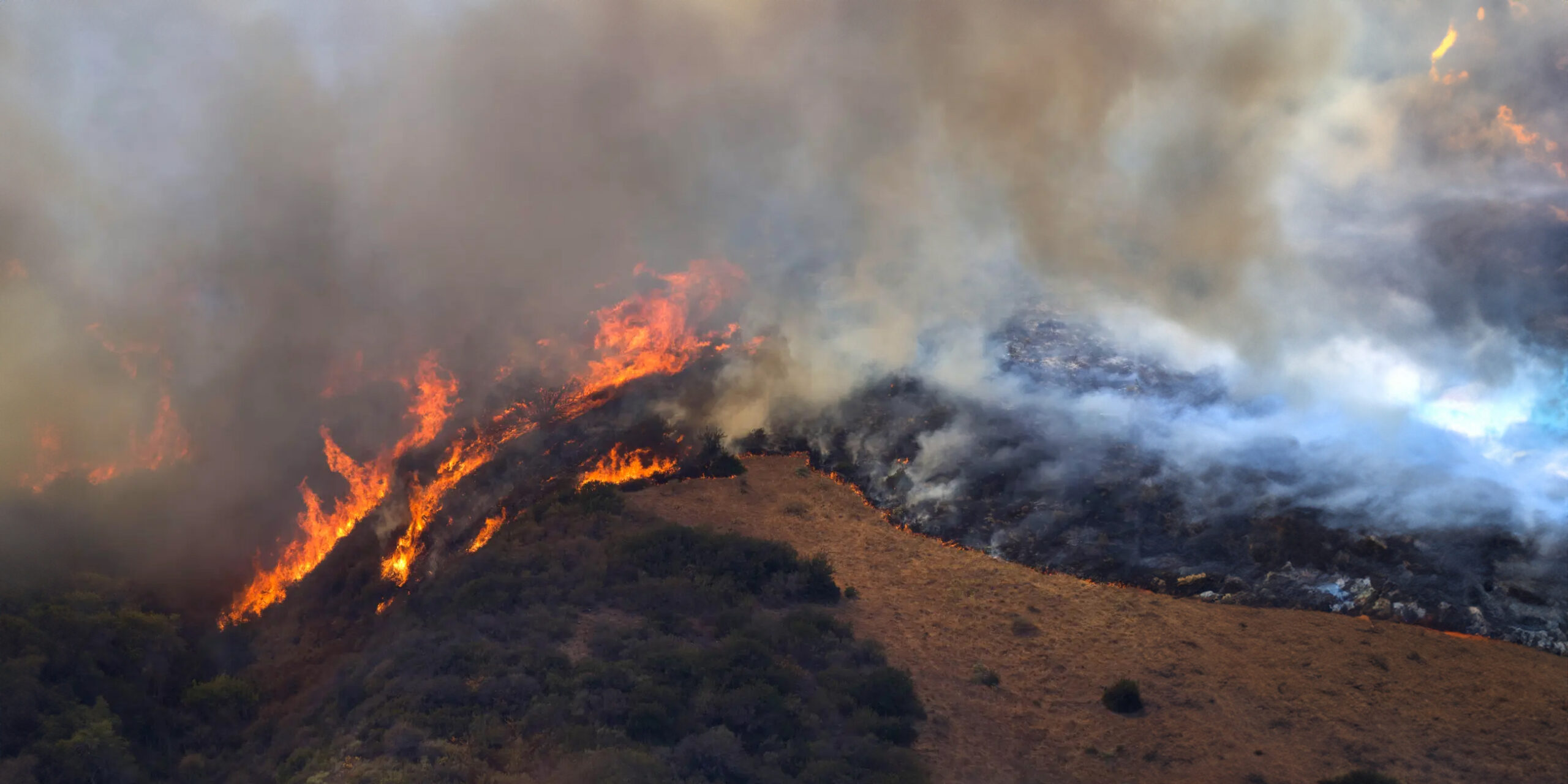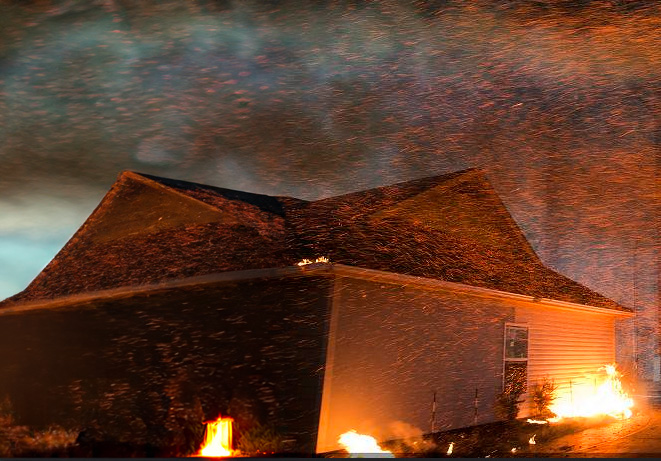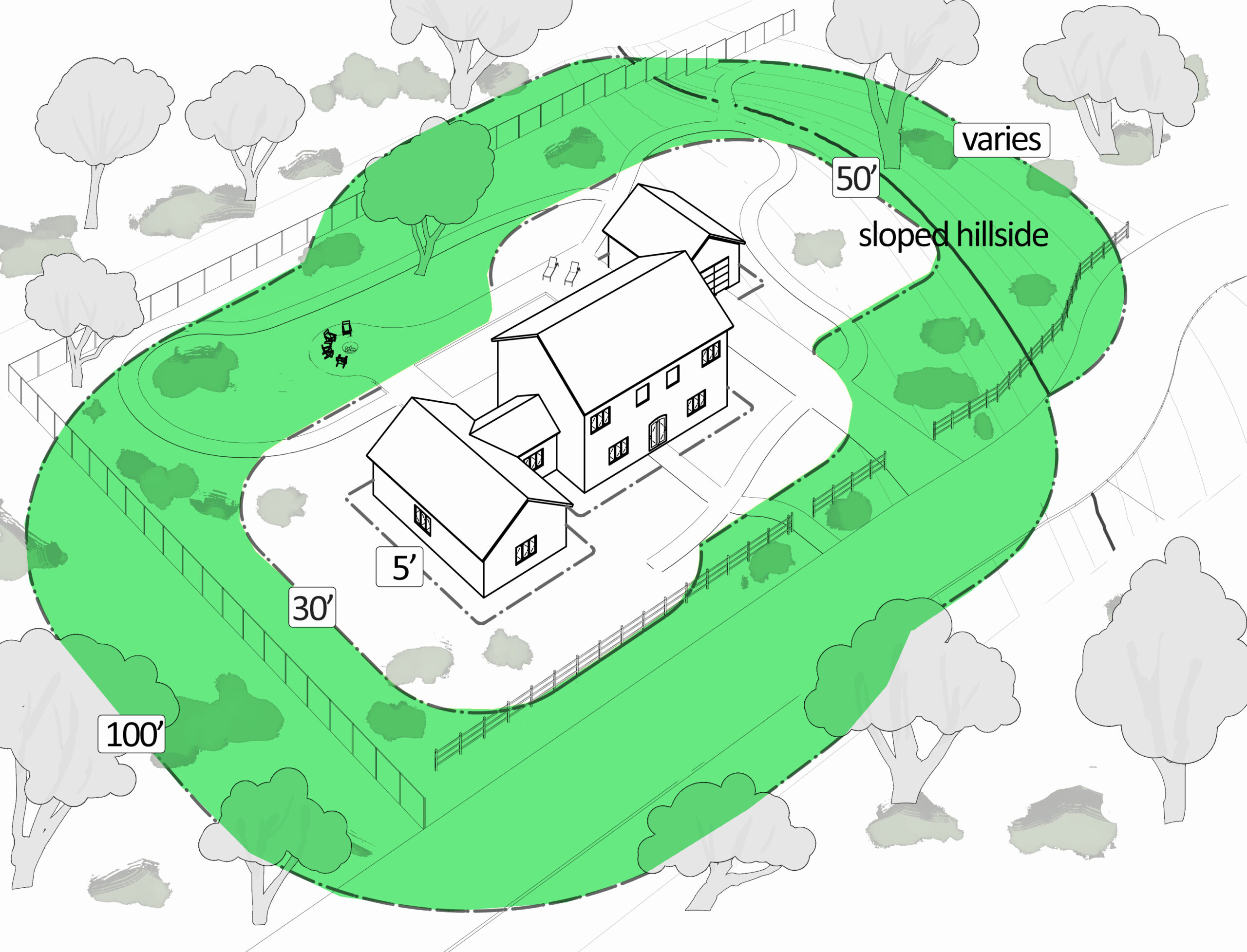
Wildfire Resilience for Home and Landscape
Our wakeup call came in 2017.
My wife and I had just moved into our newly purchased home on Howell Mountain. Within a week, the Atlas Fire broke out. As it burned north, we watched the fire maps, wondering if there was anything we could do to protect our new house. We were evacuated for 19 days. The Atlas Fire was part of the 2017 Northern California Fire Storm, burning at least 245,000 acres, destroying almost 9,000 structures, and tragically taking 40 lives. The damage was estimated at $14.5 billion.
Four years later, we were awoken by a call from a friend at 4:00 AM, warning us of a fire on the switchbacks working its way up the mountain. We packed up again and evacuated. The Glass Fire burned almost 70,000 acres and destroyed 1,500 structures. Thankfully, no lives were lost, but many friends suffered total loss of their homes and properties.

The combination of drought, mismanagement at all levels, and poorly maintained properties enables the rapid spread of these fires.
Gardens are not only a way for us to connect our lives and homes to the environment we live in, but they are also the first line of defense against wildfire.
The biggest question is: How do we nurture our gardens and protect our homes while still creating a beautiful, peaceful spaces?
Over the past eight years, I have gathered information, talked with other profesionals, and obtained all the wildfire certifications I could find. I have built a history of creating beautiful gardens that help protect my clients’, and my own, homes. the industrys standard dummy text ever since the 1500s, when an unknown printer took a galley of type and scrambled it to make a type specimen book.
Understanding the real threat.
When people think of wildfires attacking their homes, they often picture a wall of flames advancing on their house. However, the real threat to your home is floating embers, which can travel three-quarters of a mile or more ahead of the actual burn zone. These embers float in the winds created by the wildfires, causing spot fires and igniting residences. Small forward embers can light dried leaf litter in your gutter, old wood furniture on your deck, and shrubs under your windows. The goal is to prevent embers from igniting your home when they land in flammable material in the immediate perimeter of your home.

Embers are the real issue.
Embers are responsible for up to 60% of wildfire ignitions.
This involves maintaining and modifying living and dead fuels within 100 feet of your home and structures. It’s essential to carry out defensible space work alongside efforts to harden your home.
New research and information are rapidly changing the recommendations for defensible space. For example, in 2024, a new “Zone” was implemented. Zone 0 is the first 5 feet from your house, and studies have shown that proper Zone 0 implementation and maintenance can reduce the loss of a structure by up to 90%.
Wildfire safety starts at your house.
Fire safety in the wildland-urban interface (WUI) starts at the home, with the use of fire-resistant building materials and architectural features, good maintenance practices to avoid ember ignitions that could start fires in and around the house.
Strengthening or upgrading your home can be the most effective measure against ember penetration. Onsite we will identify defensible systems for different parts of your home, such as the roof and gutters, decks, windows and doors, fences and more.
We will assess the relative cost of upgrading features to ember-resistant materials and designs, prioritizing those most vulnerable to wildfires and embers.

Beyond the home.
It’s crucial to implement fire-wise landscaping by selecting and maintaining appropriate plants and hardscape.
Proper planning allows for a beautiful native landscape and yet a fire-wise home.
A fire-wise landscapes should include hardscape elements such as gravel paths, stone walls, and planting ‘islands’, which act as fuel breaks and help to slow down or alter the path of an approaching fire.
Defensible Space Zones
Zone 0: The Ember-Resistant Zone (ERZ)
No Fuel, No Fire
The first 0–5’ perimeter around your home or attached deck – the goal here is to prevent embers from igniting your home.
Most structure losses are due to embers, not direct flames – One really can’t repeat this enough. This requires a shift from traditional landscaping, replacing the traditional woody shrubs with inorganic materials like gravel or stepping stones. CAL Fire recommends removing or replacing combustible plants, mulches, woodpiles, and wooden fences or gates with noncombustible alternatives.
This is the zone that demands immediate action – it is the zone with the greatest impact. It includes your asset and everything within 5 feet from around it. This zone is where firebrands and heat accumulate and must be the most fire protected.

Zone 1: The Home Protection Zone:
Keep it Lean, Clean, and Green within 30 feet.
This zone is designed to minimize ignition risk, interrupt flame pathways, and give firefighters room to defend. It’s a well irigated area where strategic spacing, pruning, and debris removal make the biggest impact
Reduce fuel connectivity between garden beds, shrubs, and trees to prevent fire from reaching the house or tree crowns. Plant in “islands” separated by hardscape to provide cover for ground-nesting birds and control erosion. This zone is ideal for hardscape elements like water features, patios, paving stones, dry creek beds, or boulders.
This Zone demands the second greatest use of your resources and time.

Zone 2: Reduced Fuel and Thinning
Slow the Burn
Starting at zone 1 and encompassing everthing out to 100ft, the goal here is to create a low-ignition landscape capable of dramatically slowing down fire spread.
Here we need to eliminating continuous, dense vegetation to decrease the energy and speed of a wildfire. This moderates fire behavior, lowering flame heights and intensity. Increase spacing between trees or groups, and prune lower branches. Creating islands of vegetation, similar to the 5–30’ zone, is ideal.
This moderates fire behavior, lowering flame heights and intensity.

HOW WE CAN HELP
Uncommon Gardens Design can help you by designing a garden that is beautiful and yet still follows the CALFire zone system, reducing the chances of losing your home to a wildfire.
We can help you make a “to-do list” for projects to harden your home, from easy weekend projects to help hiring contractors for major fire renovations.
At Uncommon Gardens Landscape Design, we are experts in managing the terrain of fire prone areas including firescaping, home hardening, maintenance, and fire recovery.
If you would like to prevent your home or landscape from being damaged by wildfire, please get in touch with us by calling 707-328-0804.
